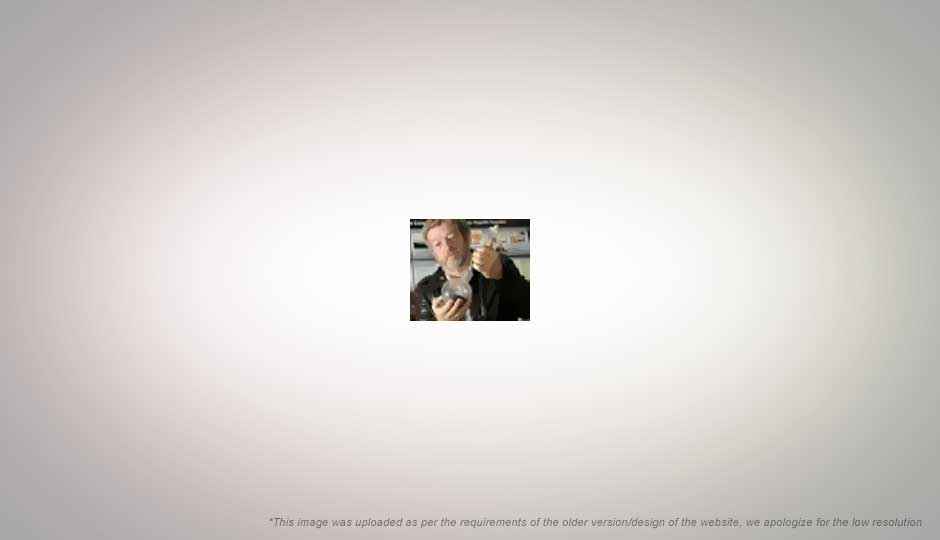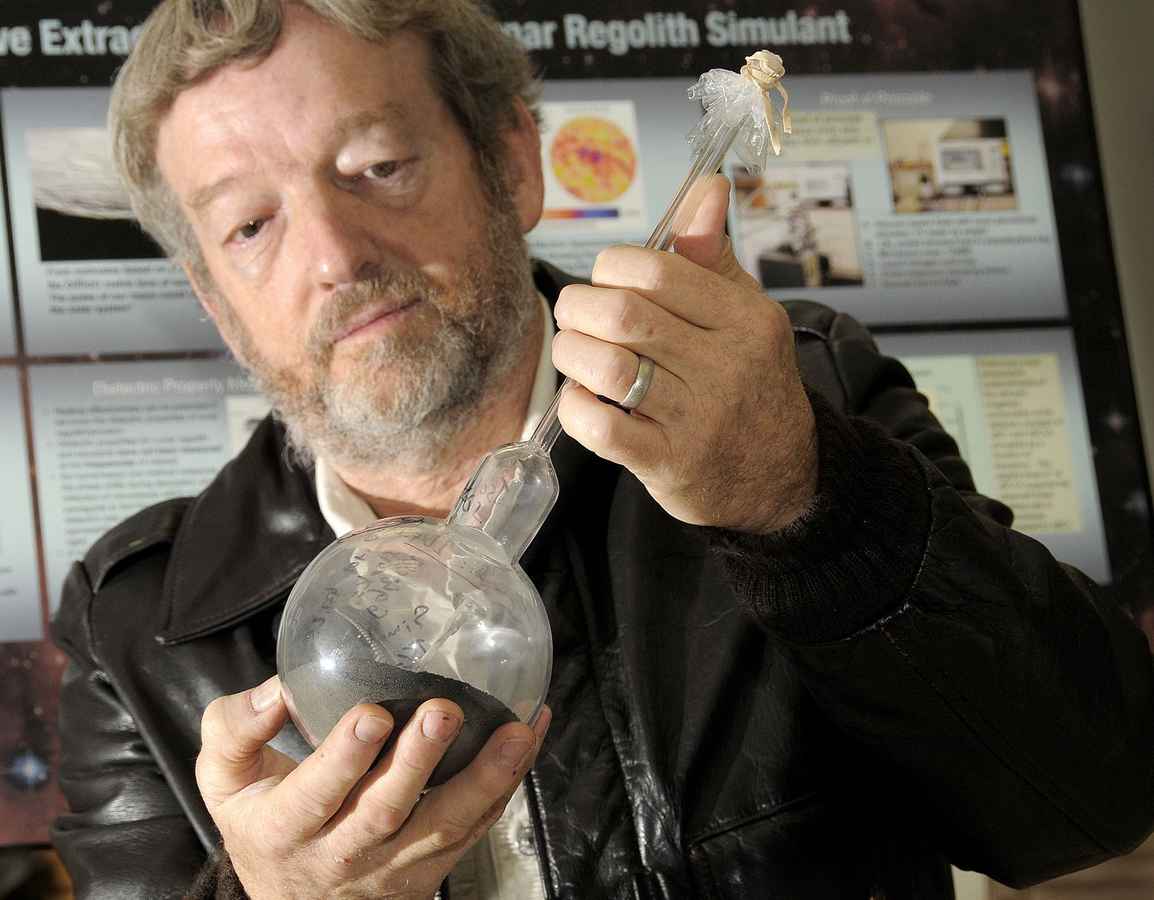NASA scientists ready to ‘cook’ water from soil on the moon
By
Mihir Patkar |
Updated on 20-Oct-2009


Dr. Edwin Ethridge holds his “moon in a bottle” experiment in his lab at the
Marshall Center. Ethridge’s team has successfully extracted water from
simulated lunar soil using a standard one-kilowatt microwave oven. His research
is opening new doors of opportunity to harvest water from the moon to sustain
life and produce rocket propellant for future lunar missions
Interest in the presence of water on the moon has been high recently, what with Chandrayaan finding traces of it and NASA crashing a rocket into the satellite to confirm the same.
Dr. Edwin Ethridge was intrigued by NASA lunar missions in the 1990s which suggested the existence of ice within craters at the moon’s poles. After five years of research, using a conventional kitchen microwave and lunar soil stimulant, Ethridge and his team have literally cooked water out of the soil!
“Water is one of the most plentiful compounds in the universe,” said Ethridge, the principal investigator for the Research Opportunities in Space and Earth Science (ROSES) project at the Marshall Space Flight Centre.
The extraction process has shown to be able to retain 99 per cent of the ice it targets. This new discovery could lead to the moon becoming a lunar outpost for further space exploration, as we could harvest water in the form of ice from the moon to sustain life and produce rocket propellant, Ethridge said.
“Finding water ice on the moon and Mars creates a potential for In Situ Resource Utilization, or ISRU,” he added. ISRU is the use of resources found on other astronomical objects, like the moon, to complete a science mission.
HOW IT WORKS
To construct the lab experiment, the team used a standard, one-kilowatt microwave oven, a quartz container with a simulant and a separate liquid nitrogen-cooled container with a simulant to mimic the ground under the top layer of lunar soil, also known as regolith. They assembled a turbo-molecular vacuum pump to simulate the moon’s vacuum environment and sealed a vacuum line from the pump to the flask collecting the water, frozen from a liquid nitrogen cold trap. They placed both containers of simulant in the microwave and heated them for two minutes.
“Cooking” the simulant helped the team understand how the molecules in the soil react to microwave energy. The primary advantage of using that energy is that microwaves penetrate the soil, heating it from the inside out. The team found that when regolith is warmed from minus-150 degrees Celsius to minus-50 degrees, the water vapor pressure greatly increased. The simulated lunar vacuum drew the water vapor to the surface, permeating through the regolith particles. Then the water vapor collected on the cold trap and condensed back into ice. This process – called sublimation – uses heat to convert a solid into a gas and cools it to condense it back to a solid form without liquefaction.
WHY MICROWAVES
As the lunar regolith absorbs the microwaves, the energy is converted to heat. Heat is what is needed to vaporize the water, making the process energy efficient, Ethridge said.
“To extract the ice, we need to heat a large volume of regolith and the best way is using microwaves,” Kaukler added. “Solar heating is not an option because the ice on the moon is in the shadowed craters where there is no sunlight. In addition, because the regolith is a superinsulator, other heating methods like solar, laser or electric heating only heats the surface. Microwave heating allows for deeper penetration into the soil.”
The regolith simulant and the cold trap were weighed before and after the experiment. The team found that 95 percent of the ice added to the regolith simulant was extracted in about two minutes.
“Of the extracted ice, 99 per cent was captured in the cold trap,” said team member Dr. William Kaukler.
THE VARIOUS BENEFITS IT OFFERS
The extracted ice can be used for multiple purposes to meet human needs at a lunar outpost. Water also can be split into hydrogen and oxygen by a process known as electrolysis, which separates materials with the use of an electric current. Once split, the hydrogen and oxygen molecules could be used as a fuel or oxidizer.
“Having water, we can obtain oxygen and have the ability to generate rocket fuel. This makes the moon a more viable test bed for space exploration,” said Ethridge.
“With our experimental metrics using a one-kilowatt microwave, we found that if we could extract two grams of water ice per minute, we could collect nearly a ton of water per year,” he added. “That would meet the initial manned lunar outpost water resupply requirement.”
There are multiple benefits of microwave extraction of ice as well. Microwaves of lower frequency can penetrate a meter or more into the regolith and release the ice without digging or disturbing the surface.
“Eliminating the need to excavate saves equipment payload and more importantly, doesn’t kick up dirt that could adversely affect the astronauts’ spacesuits or equipment,” Kaukler noted.
Ethridge said his team is anxiously awaiting the findings from NASA’s Lunar Crater Observing and Sensing Satellite (LCROSS) mission which impacted a lunar crater Oct. 9 in search of water. Spectral analysis of the impact plume will help quantify how much ice is hidden in the polar regions of the moon.
“It is very important to know how much water there is and how deep it is under the lunar surface,” Ethridge added. “Hopefully, LCROSS will find large quantities of ice and will help us know how much water we have to cook.”
